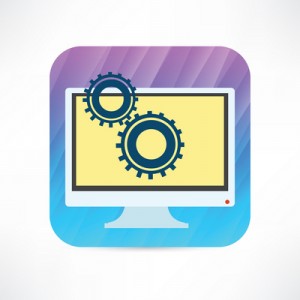
First off, note that how much RAM (along with the type and speed) that your system supports will depend on your motherboard.
Consult your PC/motherboard manual, or, if your PC was manufactured by an OEM, use a system checker such as the one found on Crucial.com to find out what RAM is compatible with your system.
Adding RAM to your computer is not a process that will magically make everything run faster. But it can aid your PC in multitasking and performing intensive-heavy tasks like loading 20+ browser tabs, content creation like editing videos or images, editing multiple productivity documents, and running more programs at one time.
Computers may experience significant slowdowns when running a large number of programs at once with low memory.
If all RAM space has been used when trying to open programs, the computer resorts to using virtual memory on the hard drive, which slows the computer down quite a bit.
Upgrading or adding additional memory can eliminate this problem as the computer doesn’t have to resort to using the hard drive for slower pagefile memory.
How much RAM you need in your computer depends heavily on what you use your PC for on a day-to-day basis and on how long you intend to keep the computer.
If you are thinking of investing in a new machine in the near future, waiting things out until your purchase might be the best bet.
If you already have a computer you love but want to shift gears into a different daily task that requires better performance, then upgrading your RAM as part of the process is a great idea and can breathe some extra life into your computer.
Productivity
If you use your Windows 10 computer for word processing, checking emails, browsing the Internet, and playing Solitaire, you should have no problem using 4GB of RAM. If you are performing all of these activities at once, however, you might experience a dip in performance.
Many budget PCs come with 4GB of RAM as a base option. If you plan on keeping your machine for several years, then opting for 8GB of RAM is the safer bet, even if you use it for light tasks.
Video and Photo Editing
This really depends on your workload. If you are editing quite a bit of HD video, go for 16GB or more. If you’re working mainly with photos and a bit of video thrown in, 8GB should get you through. Again, in this instance, it may behoove you to opt for 16GB to give yourself more future-proofing headroom as photo and video quality is only getting better with file sizes exponentially increasing and becoming more memory intensive. Editing will work on lower amounts of RAM, but you’ll become so frustrated with the poor performance that you’ll soon start yearning for an upgrade.
In a nutshell, here are some simple guidelines that apply to most PC devices:
- 4GB: Entry level memory. Comes with budget notebooks. Fine for Windows.
- 8GB: Excellent for Windows and Mac OS systems. We recommend this for most people.
- 16GB: Ideal for professional work and the most demanding tasks.
- 32GB and beyond: Enthusiasts and purpose-built workstations only.
Remember, buying more RAM than you need doesn’t net you any performance benefit. It’s effectively wasted money.
Buy what you need, and spend what’s left of your budget on more important components such as the CPU or faster storage space like a solid state hard drive (SSD) which can be 10 times faster than a conventional hard drive.



